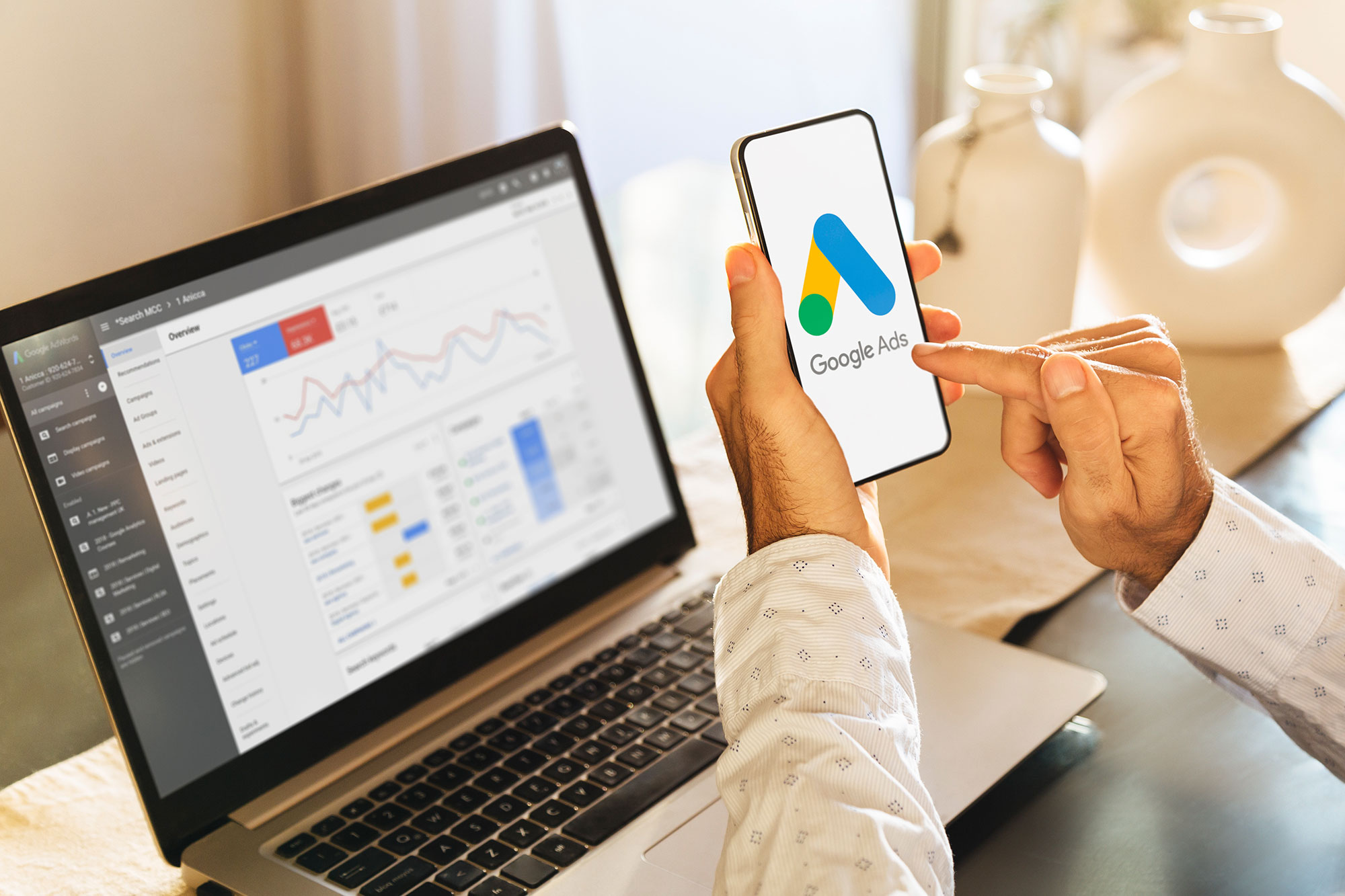If you own a business in Calgary—whether you’re running a cozy coffee shop in Kensington, a high-tech IT service firm downtown, or a dedicated plumber serving the four quadrants—you are in a constant, silent battle for visibility. Not on the street, not on a billboard, but right there, in the palm of your customers’ hands: Google.
In a city as sprawling, competitive, and constantly moving as Calgary, simply having a great service or product isn’t enough anymore. You could make the best artisanal sourdough in Bridgeland, but if a local searches “bakery near me” and your name doesn’t pop up in the coveted ‘Map Pack’ (that little block of three businesses at the top of Google results), you might as well be invisible.
This isn’t about some global, abstract SEO wizardry. This is about Local SEO, and for a Calgary business, it is a lifeblood. It’s the difference between a ringing phone and a silent one, a full schedule and an empty calendar.
We’re not going to hit you with a bunch of confusing technical jargon. We’re going to walk you through the 5 Critical Local SEO Steps Every Calgary Business Should Follow. Think of this as your personalized, no-BS survival guide for dominating the local search results and finally getting your piece of the massive local search pie.
Ready to roll up your sleeves and get to work? Let’s go.
The Calgary Context: Why Local SEO is Different Here
Before we dive into the steps, let’s acknowledge why Calgary is a unique beast. We’re a city of distinct neighbourhoods, a city built on a spirit of “get it done,” and a city where people value a local connection.
- The Neighbourhood Factor: From the Beltline to Bowness, from McKenzie Towage to Tuscany, Calgarians are intensely loyal to their communities. A search for a “gym in Aspen Landing” or a “daycare in Panorama Hills” is far more common than just a general “Calgary [service]”. Your SEO strategy must reflect this hyper-local intent.
- The “I Need It Now” Economy: When a pipe bursts, or a furnace quits in a January cold snap, the user is not browsing. They are searching for an immediate solution, and they are looking for the top-ranking, most credible business on their phone right now. Local SEO is your emergency hotline.
- The Competitor Density: Calgary is a thriving economic hub. For every service—from dentistry to digital marketing—the competition is fierce. Local SEO is your chance to cut through the noise and stand out as the definitive answer.
Now that we understand the landscape, let’s talk strategy.
Critical Step 1: Claim and Optimize Your Google Business Profile (GBP) Like a Pro
The Google Business Profile (GBP) is the absolute foundation of your local SEO efforts. If your website is your digital storefront, your GBP is the front door to the Calgary Google ecosystem, complete with your nameplate, hours, and a big neon sign flashing “Open for Business!”
This is the single most important 10-foot pole you have in local search.
A. The Setup: NAP Consistency is King (and Queen)
- The NAP Rule: Your Name, Address, and Phone number must be 100% identical across your GBP, your website, and everywhere else online. We mean identical. If your website says “St. NW” and your GBP says “Street Northwest,” Google sees two different businesses. Pick a format and stick to it religiously.
- Choose the Perfect Categories: This is crucial. Google uses your primary category to determine what you are. Don’t be too generic. Instead of “Restaurant,” be “Casual Italian Dining” or “Gourmet Burger Joint.” Use the secondary categories to fill out your full offering, but be honest—trying to game the system here will only hurt you.
- Write a Compelling Business Description: Yes, you need to include your key services and target areas (e.g., “Calgary-based HVAC experts serving the SW and SE quadrants”), but don’t stuff it with keywords. Make it personable and genuinely explain what you do and who you serve.
B. The Power-Up: Filling the Tank
A bare-bones GBP is a missed opportunity. You need to treat it like a mini-website that Google loves to promote.
- Upload High-Quality Photos (Lots of Them!):
- Exterior: Clear, well-lit photos of your storefront (crucial for local recognition).
- Interior: Show off your vibe!
- Team & In Action Shots: People trust people. Show your smiling Calgary team helping customers or performing your service.
- Post Regularly (Like Social Media, But for Google): Use the “Posts” feature on your GBP for promotions, events, new products, or even just a general update. These act like fresh, relevant content signals that tell Google you are an active business. Think of it as free, high-visibility advertising.
- Services/Products: Be meticulous. List all your services with keyword-rich descriptions. For a plumber, list “Emergency Pipe Repair Calgary,” “Hot Water Tank Installation SW Calgary,” etc.

Critical Step 2: Become a Neighbourhood Champion with Hyper-Local Content
Remember how we mentioned Calgarians love their neighbourhoods? Step 2 is about tapping into that loyalty by creating content that specifically targets those micro-markets. This is how a small local business can outrank a national chain.
The Strategy: Location-Specific Landing Pages & Blog Content
A. Location Landing Pages (If Applicable)
If you service different regions or have multiple locations (e.g., a physiotherapy clinic with a Beltline location and a Crowfoot location), you need a dedicated page for each one.
On each page, you must include:
- The full, correct NAP for that specific location.
- An embedded Google Map for that location.
- A unique description of the services offered at that location.
- Hyper-local keywords: Mention specific landmarks, major roads, and adjacent neighbourhoods (e.g., “Our Beltline clinic is just steps from 17th Ave SW, perfectly positioned to serve the Downtown West End and Mission areas”). This proves your physical presence and relevance.
B. Geo-Targeted Blog Posts
This is where you show your local expertise. Don’t just write about generic industry topics. Tie your knowledge directly to the Calgary experience.
- Example for a Landscaper: Instead of “5 Tips for Spring Gardening,” write “Preparing Your Calgary Lawn for Spring Thaw: A Neighbourhood-by-Neighbourhood Guide” (mentioning different soil types in established areas like Mount Royal vs. new developments in Auburn Bay).
- Example for an Auto Repair Shop: Instead of “Signs Your Brakes are Failing,” write “The Real Cost of Winter Driving on Your Brakes: What Every Calgary Driver Needs to Know.”
The Takeaway: Google is looking for the most relevant and trustworthy local expert. When you speak directly to a Calgarian’s unique problems and locations, you establish yourself as the authority.
Critical Step 3: Turn Happy Customers into SEO Gold with Reviews
Reviews are the social proof that fuels your local search ranking. They are the digital version of word-of-mouth, and Google treats them as a major signal of your business’s trustworthiness and quality. The three R’s of review management are: Request, Respond, and Repeat.
A. Proactive Requesting: Make it Simple
- The “Moment of Delight”: Train your staff to identify the “moment of delight”—the moment the customer says, “Wow, I love it!” or “That was fast/easy/delicious.” That’s when you present the request.
- Use the Direct Link/QR Code: Google makes it easy to generate a short link to your review form. Put this link:
- On your receipts (QR code).
- In a follow-up email 24-48 hours after service completion (“We hope you loved your [service/purchase]! A 5-star review helps our small Calgary team more than you know: [Link]”).
- On a small, branded card at your checkout counter.
- Avoid Incentives (It’s Against Google’s Rules!): You cannot offer a discount or a free coffee in exchange for a review. Instead, frame it as a favour to help your local business grow.
B. Responding: The Public Conversation
You must respond to every single review, positive or negative. This is non-negotiable. It shows Google and potential customers that you are engaged and care about your reputation.
- Positive Reviews: Thank them, personalize your response (mention a detail of their service if you can), and subtly re-insert keywords.
- Example Response: “Thank you, Sarah, for trusting us with your kitchen reno! We are so glad our Calgary cabinet installation team could deliver the 5-star quality you expected. Enjoy your new space!”
- Negative Reviews: Take a deep breath. Address the issue professionally, apologize for the negative experience, and offer to take the conversation offline (e.g., “Please call me directly at [phone number] so we can resolve this personally”). Never get defensive or argumentative in public. Your response is for future customers who are watching how you handle a problem.
Critical Step 4: Master the Technical Trio for Seamless Mobile Experience
Local searches happen primarily on mobile phones. Think about it: someone is driving, walking, or quickly glancing at their phone for an immediate need. If your website is slow, clunky, or hard to navigate on a phone, they are hitting the back button and going straight to your competitor.
This isn’t just about aesthetics; it’s a core ranking factor.
A. Website Speed (The Need for Speed)
In our instant-gratification world, every second counts. Google uses page speed as a critical ranking signal, especially on mobile.
- Compress Your Images: Large, high-resolution images are the #1 killer of page speed. Use tools to compress them before uploading.
- Leverage Browser Caching: Ensure your website host and setup allow for caching so that returning visitors load your site faster.
- Check Your Speed: Use Google’s PageSpeed Insights tool. If you’re scoring in the red (under 50), you have work to do, and you are actively losing customers.
B. Mobile-First & Responsive Design
This means your website must look and function flawlessly on a tiny phone screen.
- Click-to-Call Buttons: Your phone number should be a clickable button at the top of every mobile page. No one wants to copy and paste.
- Clear Calls-to-Action (CTAs): Booking, Request Quote, Buy Now—these need to be prominent, thumb-friendly buttons.
- Legible Text: Don’t make people pinch and zoom. Use large, readable fonts.
C. Structured Data Markup (The Secret Decoder Ring)
Structured data, often called Schema Markup, is code that you add to your website to help search engines understand what your content means, not just what it says. It’s like a secret decoder ring for Google.
For local SEO, the most important markup is Local Business Schema. It tells Google:
- This is our business name.
- This is our official street address.
- This is our phone number.
- These are our official hours of operation.
- This is our average review rating.
Implementing this can boost your chances of getting rich snippets and being fully represented in the knowledge panel and map results. It’s technical, yes, but your web designer or a qualified SEO partner can implement it without you needing to touch a line of code.
Critical Step 5: Build Local Authority with Citations and Backlinks
Once you’ve nailed your foundation (GBP) and your content (Hyper-Local), you need to prove your business is real, credible, and well-known in the Calgary community. This is done through Citations and Local Backlinks.
A. Citation Consistency (The Digital Phone Book)
A citation is simply a mention of your business’s NAP (Name, Address, Phone) on another website. Think of these as the modern-day phone book entries.
- The Top-Tier Directories: Get listed on all major Canadian and local directories. These include:
- Yelp
- Yellow Pages (Canada411)
- The Better Business Bureau (BBB)
- Facebook Business Page
- Industry-specific directories (e.g., Healthgrades for doctors, Houzz for contractors).
- The Rule of Consistency: We cannot stress this enough: Your NAP must be the same on every single one of these sites as it is on your GBP and website. Audit your existing listings now. Correct any discrepancies immediately. Inconsistent citations confuse Google and hurt your rankings.
B. Quality Local Backlinks (The Community Endorsements)
A backlink is when another website links back to your website. Google sees a backlink as an “endorsement.” If a major, trusted local site links to you, it’s a huge vote of confidence.
The most powerful local backlinks come from sources in and around Calgary:
- Local Chambers of Commerce: Joining the Calgary Chamber or a neighbourhood Business Revitalization Zone (BRZ) and getting a link from their directory is gold.
- Sponsor a Local Team or Event: Sponsor a community soccer team in the NW or a local arts festival. Their website often includes a “Sponsors” page with a link back to your site. This is a highly relevant, localized link.
- Partner with Complementary Businesses: If you’re a dog groomer, get a link from the local vet clinic or pet supply store, and vice versa.
- Local Press/Blog Mentions: Get featured in a local news source (like the Calgary Herald, YYC Business, or a reputable local blog).
The Takeaway: A few high-quality, Calgary-specific backlinks are worth far more than dozens of random, low-quality links from overseas directories. Focus on community engagement to build true local authority.
Your Calgary Local SEO Action Plan: A Quick Recap
We know that’s a lot of information, but it all boils down to five focused areas. Local SEO isn’t a one-and-done project; it’s an ongoing process of maintenance and improvement.
Here is your immediate, simplified to-do list:
- DOMINATE YOUR GBP: Claim, verify, and fully optimize every single field. Upload 10+ photos and commit to a weekly Post.
- BECOME A NEIGHBOURHOOD EXPERT: Create at least one hyper-local blog post or service page that specifically targets a Calgary community or a local problem (e.g., “Furnace Repair in Midnapore”).
- HUSTLE FOR REVIEWS: Create a direct link/QR code and integrate the Request into your daily customer service routine. Respond to every review within 24 hours.
- SPEED & MOBILE FIRST: Test your website speed and mobile responsiveness. Implement click-to-call buttons and ensure all information is easy to find on a small screen.
- CLEAN UP YOUR CITATIONS: Audit your Name, Address, and Phone (NAP) across 5-10 major directories and fix any inconsistencies immediately. Then, go find one great local backlink opportunity.
The businesses that embrace this strategy are the ones you see in the Map Pack, the ones whose phones are ringing, and the ones that are not just surviving, but thriving in the competitive Calgary market.
Local SEO is a complex, ever-evolving process, and maintaining all these factors can quickly become a full-time job. If you find the ongoing work of Google Business Profile optimization, citation cleanup, and technical site audits overwhelming, you don’t have to go it alone. You may need an expert local SEO agency to take the reins. We’re here to help Calgary businesses like yours achieve and sustain top local rankings. Reach out for a consultation today.




